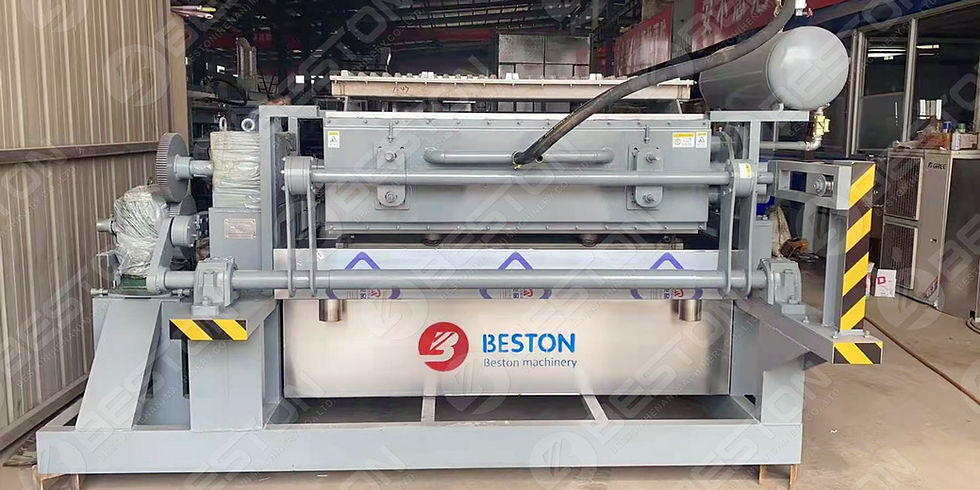The Environmental Benefits of Using Nursery Tray Making Machine for Packaging
- june11433
- Dec 1, 2024
- 2 min read
As the global demand for sustainable practices intensifies, industries are turning to innovative technologies to reduce their environmental footprint. The nursery tray making machine plays a pivotal role in promoting eco-friendly packaging solutions. By facilitating the production of biodegradable and recyclable trays, this machinery supports sustainability efforts across agricultural and horticultural sectors.
Reducing Plastic Waste
Traditional nursery trays are often made from plastic, contributing significantly to global plastic waste. The nursery tray making machine offers a greener alternative by utilizing recycled paper pulp as its primary material. This shift not only minimizes the reliance on petroleum-based products but also reduces the accumulation of non-biodegradable waste in landfills and oceans.
Biodegradable trays produced by this machine decompose naturally, enriching the soil instead of polluting it. This transformation aligns with growing environmental regulations and consumer preferences for sustainable packaging.

Supporting a Circular Economy
The use of recycled materials in a tray making machine exemplifies the principles of a circular economy. By transforming waste paper and cardboard into functional nursery trays, the process extends the lifecycle of materials that would otherwise be discarded. This reduces the demand for virgin resources and promotes resource efficiency, a critical component in combating environmental degradation.
Moreover, the production of molded pulp trays generates minimal byproducts, ensuring an environmentally responsible manufacturing process. Water used during production is often recycled, further conserving resources and preventing waste.
Energy Efficiency and Carbon Reduction
Modern nursery tray making machines are designed with energy-efficient systems that significantly reduce power consumption. Advanced drying technologies, such as multi-layer drying tunnels, enhance operational efficiency by minimizing heat loss and maximizing energy utilization. This results in a lower carbon footprint for businesses adopting these machines.
Additionally, localized production of nursery trays reduces the need for long-distance transportation. By decreasing the logistical carbon emissions associated with shipping pre-made plastic trays, businesses can contribute to global efforts to combat climate change.
Promoting Soil and Plant Health
Unlike plastic trays, which can release harmful chemicals into the soil over time, biodegradable trays made using a nursery tray making machine are entirely non-toxic. These trays break down into organic matter, improving soil quality and fostering healthier plant growth. This benefit is particularly crucial for agricultural operations that prioritize eco-friendly practices and organic certifications.
Furthermore, the customizable design capabilities of these machines allow businesses to produce trays that cater to specific plant needs, enhancing their usability while maintaining environmental integrity.
Aligning with Consumer and Regulatory Demands
As awareness of environmental issues grows, consumers and regulatory bodies are placing greater emphasis on sustainable practices. The adoption of a nursery tray making machine allows businesses to align with these expectations, demonstrating their commitment to ecological responsibility. This alignment not only strengthens brand reputation but also ensures compliance with stringent environmental regulations that are becoming prevalent worldwide.
Conclusion
The nursery tray making machine is more than just a piece of equipment; it is a catalyst for environmental sustainability in packaging. By reducing plastic waste, supporting resource circularity, and promoting energy efficiency, it addresses critical ecological challenges. Businesses that integrate this technology into their operations contribute to a greener future while meeting the demands of an increasingly eco-conscious market.




Comments